Fife Free Press at 150: Kirkcaldy's penny paper which became an institution
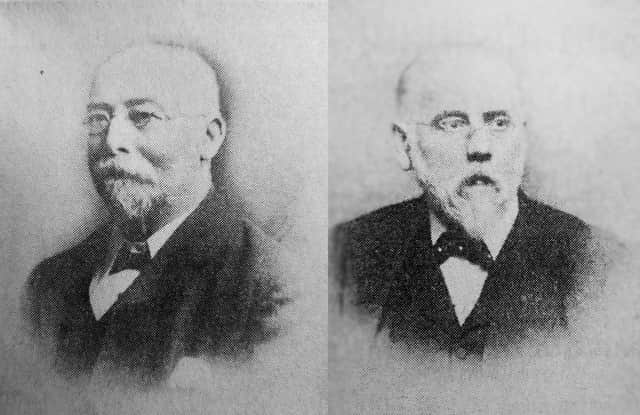

For a century and a half it has been the voice of the town - speaking up when required as well as chronicling its history week by week by week.
Launched as the first penny paper in the Lang Toun, the Press has been part of people’s lives for generations.
Advertisement
Hide AdAdvertisement
Hide AdIt has served them well. They, in turn, have given it outstanding support.
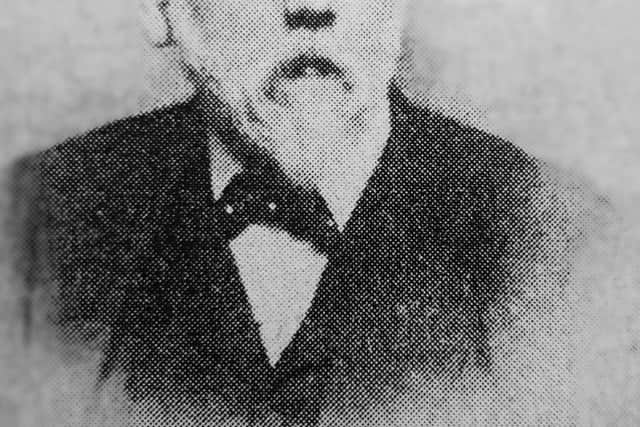

“A journal of respite and reliability” was how it was summarised in a special edition to mark its centenary in 1971 - one that has “faithfully and accurately mirrored the life and times of the people in the Kirkcaldy area.”
That legacy was forged, and protected, by the people at the heart of the paper.
There has always been an enormous sense of pride among staff across all departments working for the FFP.
Advertisement
Hide AdAdvertisement
Hide AdIt retained the feel of a family firm long after the company was taken over by Johnston Press. Indeed the name Strachan and Livingston remained on the letterheaded notepaper for many, many years.
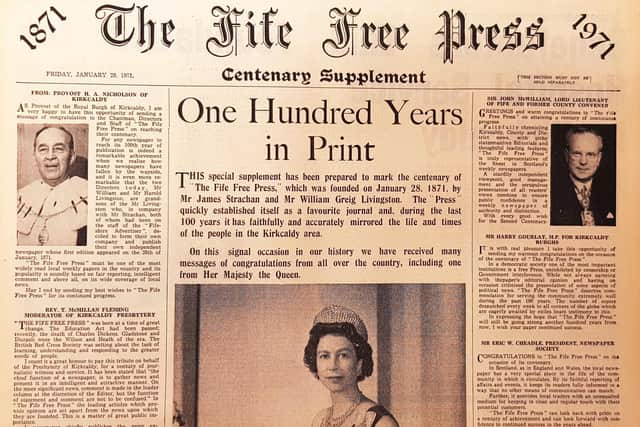

At Kirk Wynd and Mitchelston, colleagues became close friends, and the ties that bind remain strong to this day, many years after moving on from the company.
The Press launched before work had been completed on the Forth Bridge.
Kirkcaldy - “a douce town by all accounts” noted the newspaper - had a population of 5700. The burghs of Sinclairtown, Dysart, Pathhead and Linktown all lay outwith its boundaries.
Advertisement
Hide AdAdvertisement
Hide AdThe Lang Toun was built around a remarkably diverse economy which embraced everything from flax mills, engine works, breweries, and linen weaving shops, to wool yards dye works, and iron foundries.
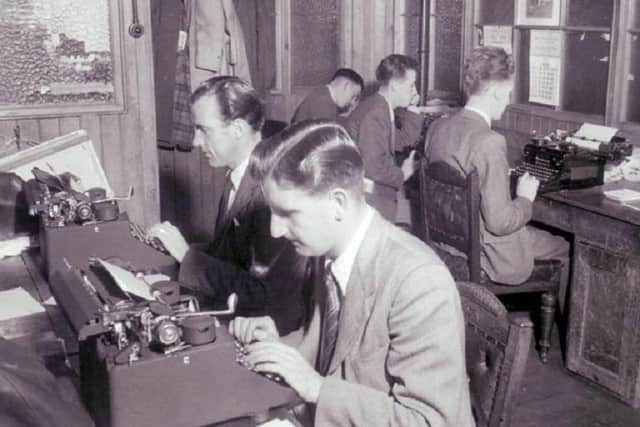

Linoleum had only just begun and was far from making its remarkable impression, and McIntosh furniture was new to the scene.
The town had two police constables, and traffic was horse drawn - the first bicycle had only just been seen, while ‘shanksneggie’ as from time immemorial, remained popular.
To give it a modern perspective, Townsend Place was only just beginning to be developed, and Victoria Road was still largely a grass track.
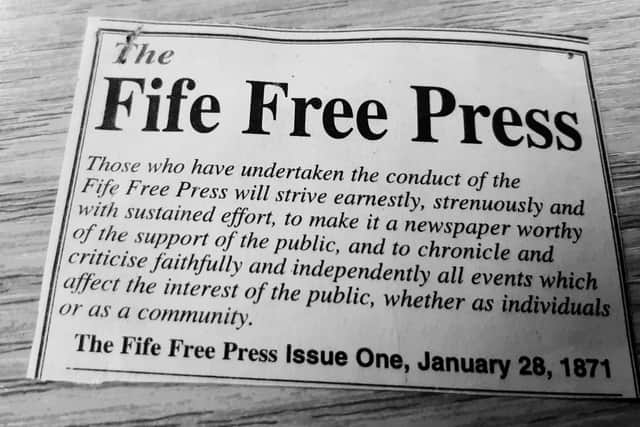

Advertisement
Hide AdAdvertisement
Hide AdFife Free Press 150th: Newspaper helps groups whenever it canFife Free Press 150th: How churches value newspaper coverage
Exactly where and when James Strachan and William Livingston made the decision to pioneer in local newspaper production the first penny paper may be lost in the mists of time, but once they had decided to introduce a new publication, they did not spare themselves in the uphill fight which they knew lay before them in getting successfully established.
On the 50th anniversary of the Press, Mr Strachan recalled: “The turmoil in connection with our first edition made an impression I will never forget.
“We had no sooner begun operations in connection with that eventful week than we discovered the heavy nature of the task we had undertaken, with the result that the adventurous, ambitious would-be newspaper proprietors were Jonah like three days and three nights - sleepless nights.
Advertisement
Hide AdAdvertisement
Hide Ad“Our efforts were not in vain, but while the first issue was being anxiously waited early in the day, it was late, late.
“Several hours yet lapsed before the demands of the newsagent could be supplied.
“We had a welcome rest on Sunday while a further impression had to be run off on Monday morning. So much for the first issue of the Fife Free Press and the hearty welcome it received.”
The two men came via the Fifeshire Advertiser.
Mr Strachan arrived in Kirkcaldy in 1862, and studied Pitman’s phonography, the shorthand of his day, making his way through textbooks until he mastered it – one that was relatively rare in those days but which every journalist today is still required to reach 100 words per minute
Advertisement
Hide AdAdvertisement
Hide AdMr Livingston had also served his apprenticeship on the Advertiser, and risen to the post of overseer.
With second hand machinery and a hand press that was less than reliable, they laid the foundations of an institution.
The Press was originally conceived as Liberal favouring free trade, entrenchment and reform, but it found an immediate demand from the working class for whom it was designed, and among whom it was to count its true and trusty friends.
And, the ‘free’ in its title underlined the independent course it was to charter for the next 150 years.
Advertisement
Hide AdAdvertisement
Hide AdThe mission statement in that first edition pledged “to chronicle and criticise faithfully and independently all events which affect the interests of the public, whether as individuals or as a community.”
In 2010, it was re-instated on the letters page as part of the newspaper’s switch from broadsheet to tabloid format - a link from the past as the Press began another new chapter.